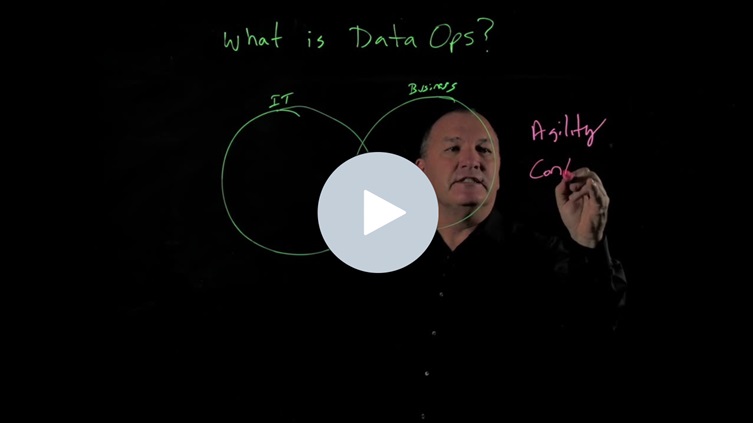DataOps
Clear operational hurdles to accelerate analytics-ready data and insights
What is DataOps?
DataOps is a methodology that streamlines data-related processes by combining aspects of DevOps and Agile principles. DataOps brings both sides of the data-delivery equation into alignment: the data manager’s need for control and transparency, and the business user’s need for real-time, analytics-ready data.
Here are the key elements:
- Break down silos and foster cross-functional teamwork.
- Collaborate, automate, and be agile throughout the data lifecycle.
- Continually improve the process through feedback loops and monitoring.
By adopting data operations practices, your organization can achieve faster time to value, consistent data quality, and better data-driven decision-making.
How DataOps Works
DataOps employs agile processes for data governance and analytics development and DevOps processes for code optimization, product builds, and delivery. In addition to building new code, streamlining and improving the data warehouse are crucial. Data operations uses statistical process control (SPC) to monitor the data analytics pipeline, ensuring statistics remain within feasible ranges, increasing data processing efficiency and quality. SPC alerts data analysts to anomalies or errors for quick response.

Plan: Partner with product, engineering, and business teams to establish KPIs, SLAs, and SLIs for data quality and availability.
Develop: Create data products and machine learning models for your data application.
Build: Incorporate the code and/or data product into your existing tech or data stack.
Manage Environments: Manage data to maximize its value through strategies such as segregating environments, collaborating across branches, and setting environment variables.
Test: Verify that your data conforms to business logic and meets operational standards.
Release: Launch your data in a test environment.
Deploy: Integrate your data into production.
Operate: Utilize your data in applications such as dashboards and data loaders for machine learning models.
Monitor: Continuously observe and report any irregularities in your data.
Benefits of DataOps
Data-driven transformation requires an agile approach across the entire data supply chain, from your infrastructure to your processes and people. DataOps helps you bring all those elements together, accelerating cycle times and improving performance with the potential to transform your organization in a number of ways:

1. Faster, more agile analytic processes

2. Data democratization

3. Continuous governance throughout the data delivery lifecycle

4. Fuller collaboration

5. A boost in data literacy
DataOps for Analytics-Ready Data with Qlik
Qlik Data Integration automates real-time data streaming, cataloging, and publishing, so you can quickly find and free analytics-ready data — and take action on it.


